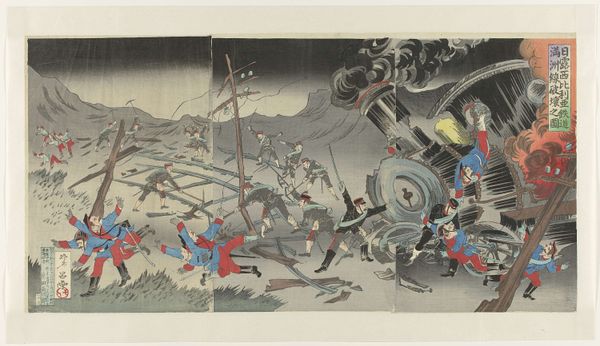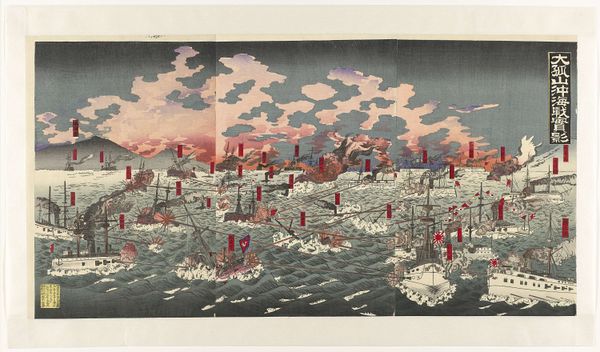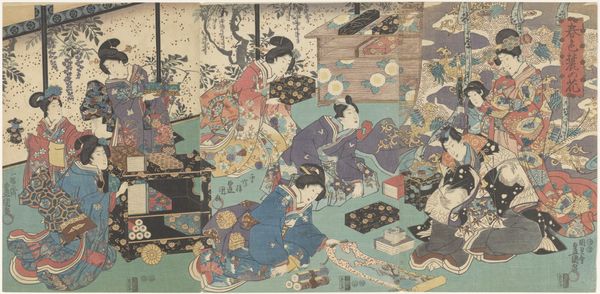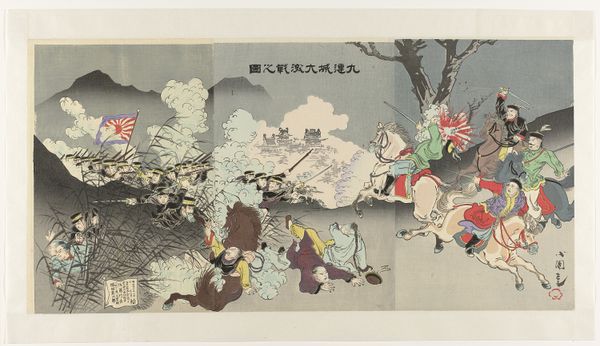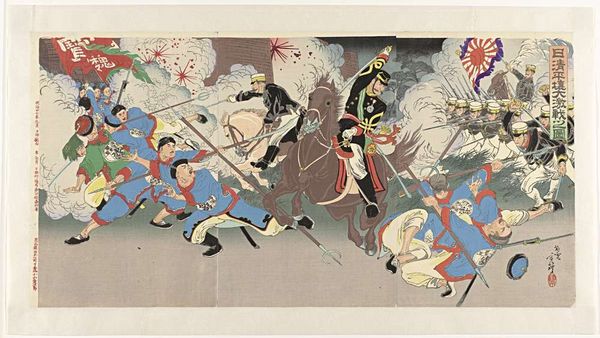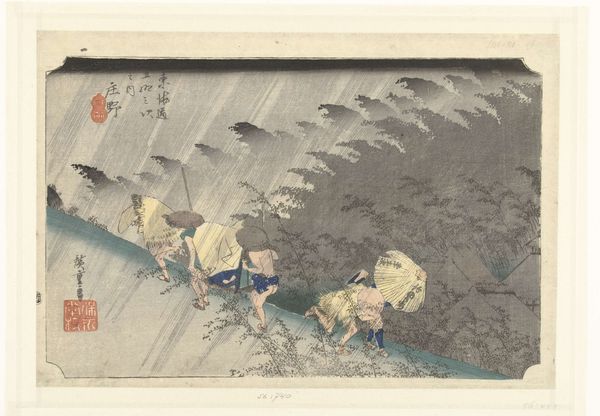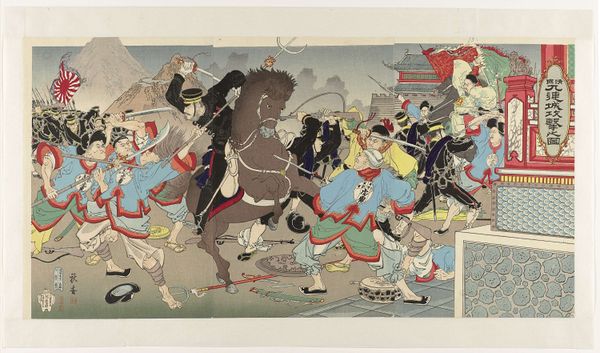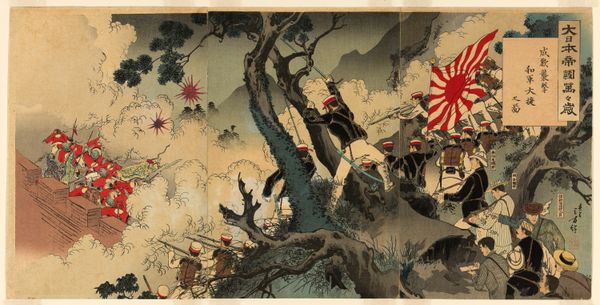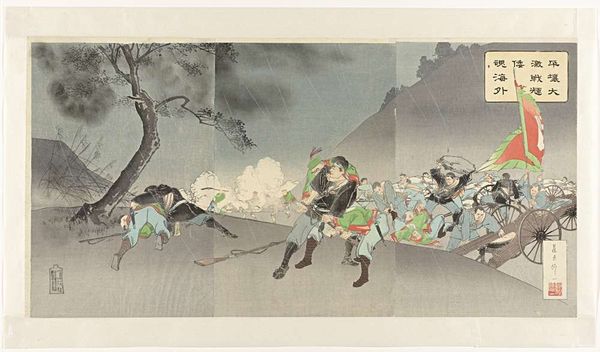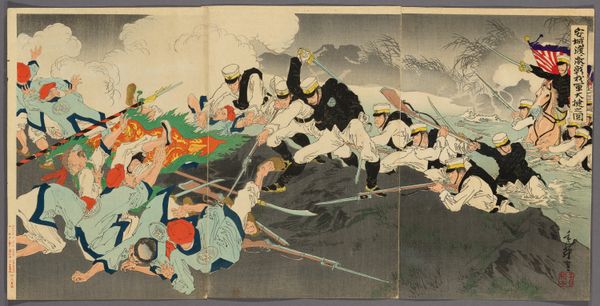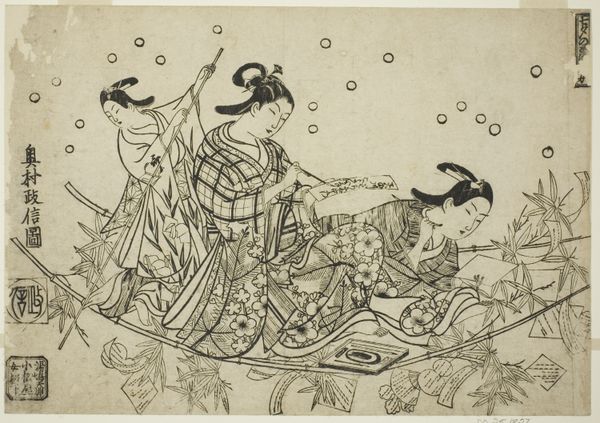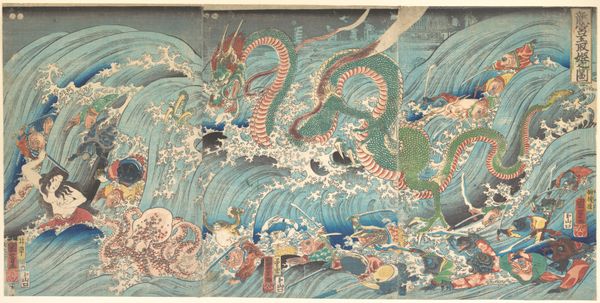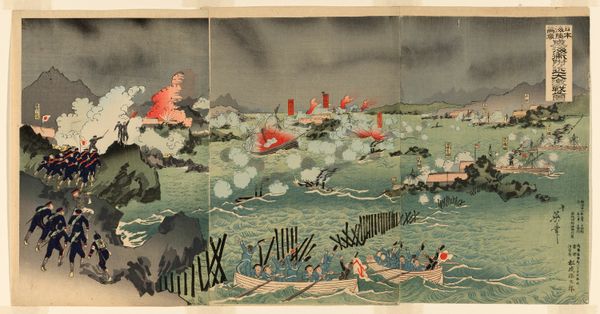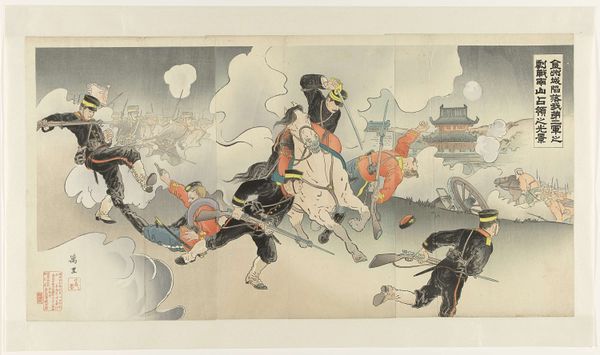
Extra krantenbericht van 26 oktober: Japanse troepen valt Chinese cavalerie aan nabij Hushan 1894
0:00
0:00
Dimensions: height 365 mm, width 724 mm
Copyright: Rijks Museum: Open Domain
Editor: This striking print, "Extra krantenbericht van 26 oktober: Japanse troepen valt Chinese cavalerie aan nabij Hushan," made in 1894 by Utagawa Kokunimasa, looks like a chaotic scene. What I find interesting is the dynamic use of watercolors, or maybe mixed media, to portray this event. What's your interpretation of it? Curator: The frenetic energy certainly draws you in. This woodblock print wasn't simply ‘art’; it was a manufactured news image, created for mass consumption. The layering of inks, the carving of the blocks – each stage reveals the hands of laborers translating imperial ambition into a digestible spectacle for the public. Consider how the cost of paper and ink dictated the scale and the colour choices, reflecting the resources allocated to war propaganda. How does understanding this piece as a mass-produced object shift your perspective? Editor: That's fascinating! Knowing it's a "news image" changes things. It makes me think about the intention behind each element—the colors chosen, the way the scene is composed. It highlights how "art" could be deployed as a tool for shaping public opinion. Did the constraints of the printing process affect its message in any other ways? Curator: Absolutely. Think about the labor division required for production. Various artisans collaborated: the designer, the block carver, the printer. Each added their hand, shaping the final product. Furthermore, this process democratized images of war, enabling wider access. Is the value of this woodblock enhanced or diminished by it being an early form of mass communication, influencing the viewer? Editor: I never thought about it that way before. Seeing this less as an isolated "artwork" and more as a product of a complex process, really gives me a fresh perspective on understanding its cultural significance and how this image made its way into the hands of a diverse range of people. Thanks for clarifying this perspective! Curator: Precisely! We move beyond mere aesthetics to recognize this as a key artefact in understanding material culture and production. We appreciate both the means and the message embedded within the object itself.
Comments
No comments
Be the first to comment and join the conversation on the ultimate creative platform.
